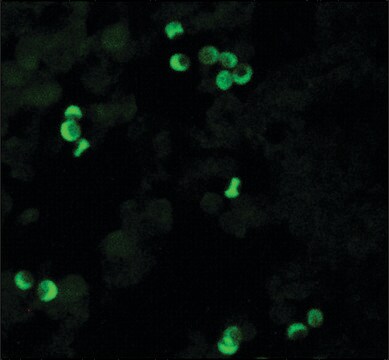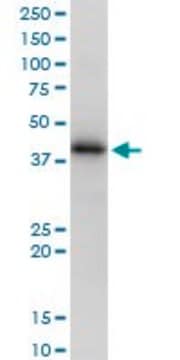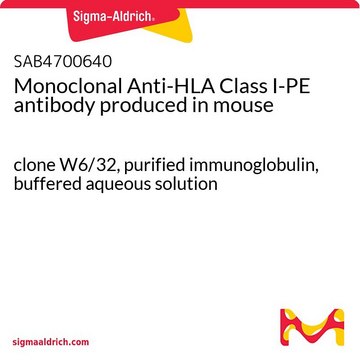F5662
Monoclonal Anti-HLA Class I Antigen−FITC antibody produced in mouse
clone W6/32, purified immunoglobulin, buffered aqueous solution
Sinonimo/i:
Monoclonal Anti-HLA Class I Antigen
About This Item
Prodotti consigliati
Origine biologica
mouse
Coniugato
FITC conjugate
Forma dell’anticorpo
purified immunoglobulin
Tipo di anticorpo
primary antibodies
Clone
W6/32, monoclonal
Stato
buffered aqueous solution
Reattività contro le specie
monkey, human
tecniche
direct immunofluorescence: 1:10 using acetone-fixed human tonsil frozen sections.
flow cytometry: 10 μL using 1 × 106 cells
Isotipo
IgG2a
N° accesso UniProt
Condizioni di spedizione
wet ice
Temperatura di conservazione
2-8°C
modifica post-traduzionali bersaglio
unmodified
Informazioni sul gene
human ... HLA-A(3105) , HLA-B(3106) , HLA-C(3107)
Cerchi prodotti simili? Visita Guida al confronto tra prodotti
Descrizione generale
The previously assigned protein identifier P01892 has been merged into P04439. Full details can be found on the UniProt database.
Specificità
4th Workshop: code no. P1
5th Workshop: code nos. BP166, BP288, BP407, B 005
Immunogeno
Applicazioni
- flow cytometric analysis
- immunoprecipitation
- complement mediated cytotoxicity
- immunocytochemistry
Stato fisico
Nota sulla preparazione
Esclusione di responsabilità
Non trovi il prodotto giusto?
Prova il nostro Motore di ricerca dei prodotti.
Codice della classe di stoccaggio
10 - Combustible liquids
Classe di pericolosità dell'acqua (WGK)
nwg
Punto d’infiammabilità (°F)
Not applicable
Punto d’infiammabilità (°C)
Not applicable
Dispositivi di protezione individuale
Eyeshields, Gloves, multi-purpose combination respirator cartridge (US)
Scegli una delle versioni più recenti:
Possiedi già questo prodotto?
I documenti relativi ai prodotti acquistati recentemente sono disponibili nell’Archivio dei documenti.
Il team dei nostri ricercatori vanta grande esperienza in tutte le aree della ricerca quali Life Science, scienza dei materiali, sintesi chimica, cromatografia, discipline analitiche, ecc..
Contatta l'Assistenza Tecnica.








